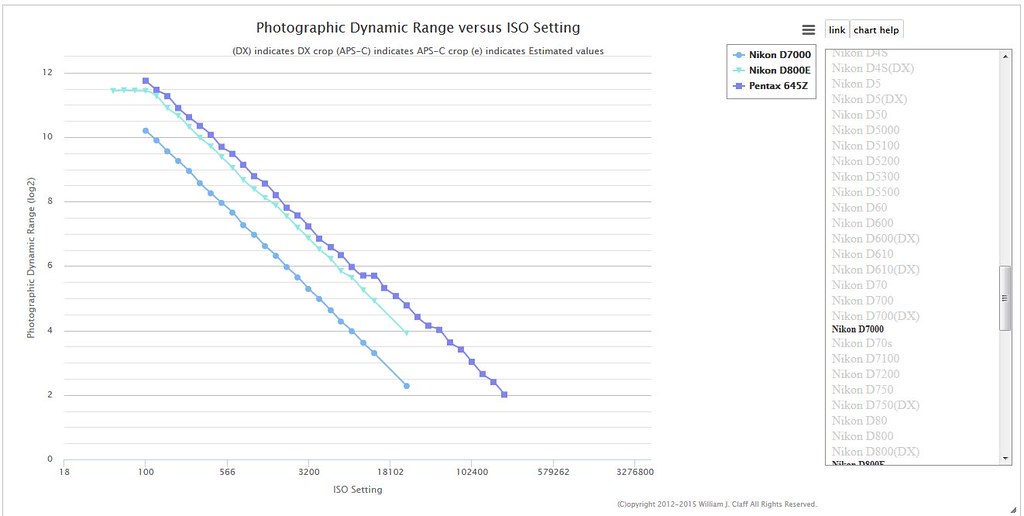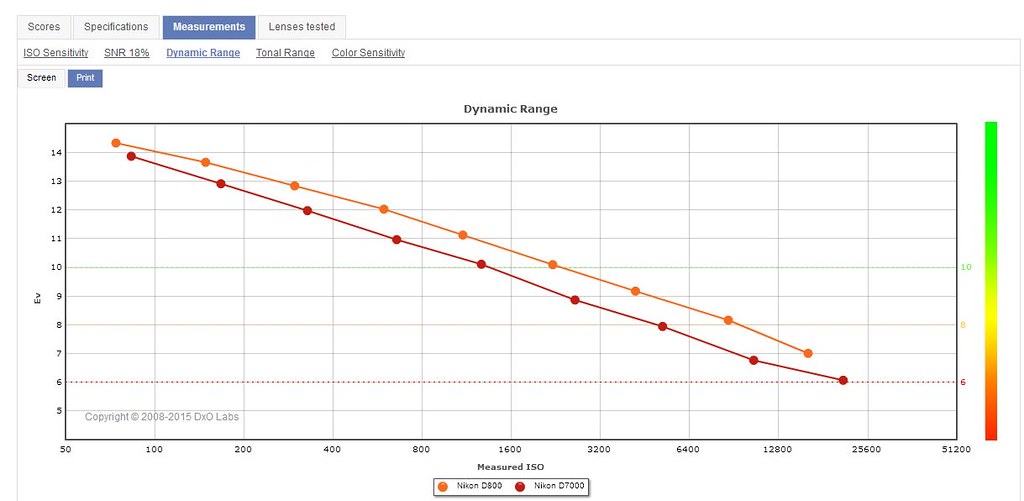.
The short answer is, "Yes, a larger sensor will give you more Dynamic Range."
The main caveats being:
- If the sensors are of similar generation and technology (newer smaller sensors can beat older larger sensors)
- Assuming same exposure, framing, but not same DOF. (Meaning, same FOV and F-stop - don't compare different exposures and expect apples-apples)
It's not always true at base ISO - newest technology is often king there. As you move up the ISO scale, you see the effects of more total light in the image when taken at the same exposure, and the larger sensor shows it's advantage.
Bill Claff is an engineer who measures raw files from almost every body, calculates and then plots a measure called PDR (Photographic Dynamic Range) - he was doing that before DPR got in the game, but their screen tab graphs mostly mirror his findings.
Here we see the PDR of three cameras - MF 645Z (yummy), D800E and D7000. The D800e and D7000 have essentially the same sensor, one just larger:

Here's DPR's graph of DR for D800 vs D7000 - again, same pixel tech:

You can peruse Bill Claff's site or DPR (choose 'print tab' to see effects on whole image, not 'screen tab' which shows you 100% view) comparing different cameras of different generations - but what you'll find as a general rule is that with roughly same-gen cameras, you almost always see a DR advantage in the ISO range with larger sensors, even with varying pixel sizes. Very simply: Larger sensor = more total light gathered at the same exposure, which affects noise and DR.
What this means to you: The obvious. Say you have a K-1 low light shot at ISO 1600 - you would see noticeably more push-pull capability in that image than you would have with your K5
taken at the same FOV and exposure, recovering highlights a bit more, pulling more things from shadows before the image breaks down.
.
Last edited by jsherman999; 04-12-2016 at 11:59 AM.


 Similar Threads
Similar Threads 










 Post #24 by JensE
Post #24 by JensE








